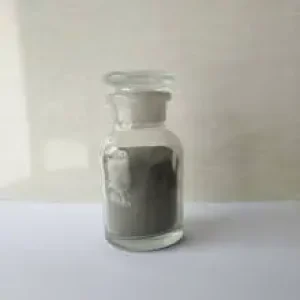Molybdenum carbide (MoC) is a refractory ceramic material valued for its high melting point, hardness, and stability under extreme conditions. It finds applications in areas where resistance to wear, corrosion, and high temperatures is crucial. Here are some key parameters for molybdenum carbide:
- Chemical Formula: MoC
- Molecular Weight: Approximately 115.94 g/mol
- Crystal Structure: Molybdenum carbide typically forms in a hexagonal crystal structure, similar to tungsten carbide.
- Density: Theoretical density is around 9.13 g/cm³.
- Melting Point: The melting point of molybdenum carbide is very high, estimated to be around 2690°C.
- Hardness: MoC is a hard material, with a Vickers hardness ranging from 18 to 22 GPa, which is lower compared to tungsten carbide but still considerably harder than many steels.
- Thermal Conductivity: It exhibits good thermal conductivity, although the exact value can vary depending on the synthesis method and purity, typically within the range of 30 to 100 W/(m·K).
- Thermal Expansion Coefficient: The thermal expansion coefficient of MoC is relatively low, usually in the range of 4.5 to 6.5 × 10^-6 /°C, contributing to its thermal shock resistance.
- Chemical Stability: Molybdenum carbide is stable under a wide range of chemical conditions and resistant to many acids and alkalis, excluding strong oxidizers.
- Electrical Conductivity: MoC is electrically conductive, although its conductivity is lower than that of metallic molybdenum due to its ceramic nature.
- Synthesis: Molybdenum carbide is typically synthesized through carbothermal reduction of molybdenum oxide (MoO3) or ammonium molybdate ((NH4)6Mo7O24·4H2O) in the presence of carbon at high temperatures, often under vacuum or inert gas atmospheres.
-
Applications: MoC finds applications in high-temperature structural components, wear-resistant coatings, hard-facing materials, and as a catalyst or catalyst support in various chemical reactions due to its stability and electronic properties.
